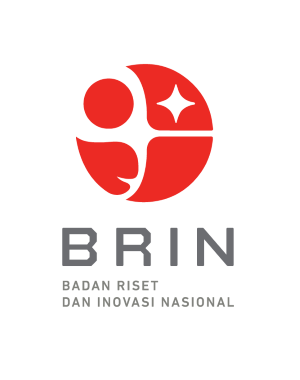PEMANFAATAN ALAT BANTU RUMPON ELEKTRONIK TERHADAP PENINGKATAN HASIL TANGKAPAN PADA ALAT TANGKAP GILL NET DI WILAYAH PESISIR KAB. BULUKUMBA
DOI:
https://doi.org/10.33096/joint-fish.v4i1.93Keywords:
Electronic FAD Tool, Catch, Gill NetAbstract
The purpose of this study was to determine the yield and type of catch, the comparison of the number of catches and the efforts to manage electronic FADs on Gill Net fishing gear. This research was conducted in Bulukumba waters from February to March 2017. Data collection was carried out by direct observation of fishermen in Bulukumba waters. The samples used in this study were FADs installed by fishermen in the waters of Bulukumba as many as 20 locations. Based on the research results, fish catches with electronic FADs ranged from 98 to 131 fish per fishing trip with a total catch of 2,324 fish. Meanwhile, the usual FAD catches ranged from 51 to 84 fish per fishing trip with a total catch of 1,313 fish and the highest type of fish was selar, followed by male mackerel, Selar bentong, white Kuwe, Layang, Barracuda, selangat and Mata goyang. The ratio between the catch and the use of electronic FADs was 64%, while the regular FADs were 36%. Considering that FADs are an effective tool in collecting fish, a sustainable management strategy is needed, including by (1) community based management, (2) limiting fishing efforts, (3) stopping the addition of shallow marine FADs. , (4) use of fishing gear with large mesh sizes and (5) prioritize the use of deep sea FADs.
References
Arimoto, T., Choi S.J. and Choi, Y.G. 1999. Trends and Prespectives for Fishing Technology Reseach Towards the Sustainable Development. In Proceeding of 5th International Symposium on Efficient Application and Preservation of Marine Biological Resources. OSU National University, Japan. Pp 135-144.
Badan Pusat Statistik Kabupaten Bulukumba, 2016. Kabupaten Bulukumba Dalam Angka. Bulukumba: Badan Pusat Statistik Kabupaten Bulukumba.
Charles, A.T, 1994. Toward Sustainability The Fishery Experience. Ecological Economics. 11, 201-211
Dagorn, L., K.N. Holand, and V. Restrepo. 2012. It is good or bad to fish with FADs ? what are the real impact of the use of drifting FADs on pelagic marine ecosystem?. Fish Fish, 14(3): 391-415
Yusfiandayani, R.,Jaya, I., dan Baswantara, A. 2014. Pengoperasian Rumpon Elektronik Pada Alat Tangkap Bagan Di Pulau Lancang Kepulauan Seribu Jakarta. Jurnal Teknologi Perikanan dan Kelautan Vol. 5 No. 1 Mei 2014: 75-82
Simbolon, D., Jeujanan,B., Dan Wiyono, E.S. 2011. Efektivitas Pemanfaatan Rumpon Pada Operasi Penangkapan Ikan di Perairan Kei Kecil, Maluku Tenggara. Marine Fisheries. Vol. 2. No. 1. Hal: 19–28.
Simbolon D., Jeujanan B. dan Wiyono E. S. (2013). Efektivitas Pemanfaatan Rumpon dalam Operasi Penangkapan Ikan di Perairan Maluku Tenggara. Jurnal Amanisal PSP FPIK Unpatti-Ambon. Vol. 2 No.2 Hal 19 – 31.
Indonesia Maritime Institute (IMI). 2012. Rumpon Elektronik, Buah Tangan IPB Untuk Nelayan. Indonesia Maritime Institute. Bogor. Diakses di indomaritimeinstitute. org/2011/07/rumpon-elektronik-buahtangan-ipb-untuk-nelayan/.Diunduh 2017 januari 15; Meulaboh, Indonesia.
Hikmah N, Kurrnia M, Amir F. 2016. Pemanfaatan Teknologi Alat Bantu Rumpon Untuk Penangkapan Ikan Di Perairan Kabupaten Jeneponto. J. IPTEKS PSP. 3(6):455 – 468.
Zuriat, Thahir , M.A., Baskoro, M.S., dan Gazali, M. 2019. Perbandingan Hasil Tangkapan Pada Rumpon Tali Rafia dan Rumpon Tradisional di Perairan Aceh Barat. Jurnal Ilmu dan Teknologi Kelautan Tropis Vol. 11 No. 2, Hlm. 369-376.
DKP (Dinas Kelautan dan Perikanan) Kabupaten Bulukumba. (2013). Laporan tahunan Dinas Kelautan dan Perikanan Kabupaten Bulukumba Tahun 2013. Dinas Kelautan dan Perikanan Kabupaten Bulukumba. 47 hlm.
Trilaksono. 2014. Fish Aggregating Device (FAD), Rumpon Elektronik Dari IPB untuk Nelayan. http://trilaksonoagung03.blogspot.com/2014/12/fish-aggregating-device-fad-rumpon.html. DI akses pada tanggal 4 Januari 2017.













